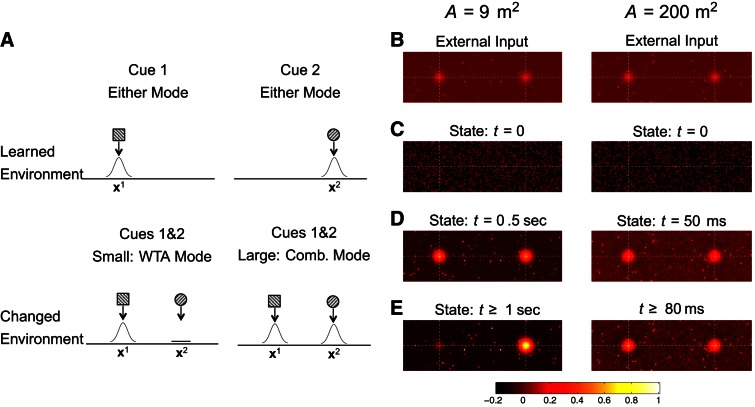Fig. 10.
Coactivation of embedded activity bumps. A megamap representing a sufficiently large environment can adapt to a changed environment by simultaneously representing multiple learned memories never before encountered together. A: this schematic illustrates a cue conflict situation in which a learned environment is changed such that cues that were originally in different locations are now present at the same location, inducing a competition between 2 embedded (learned) activity bumps. Top, the 2 activity bumps illustrated, which encode 2 locations through distinct subsets of active cells, were embedded into the megamap when the animal learned the original environment. Bottom, in a small environment, the rigid attractor dynamics of the megamap cause the place cell activity to converge to a single learned memory (WTA mode). In a large environment, the place cell activity stably encodes both cues through 2 co-active activity bumps (combinatorial mode). B–E: for the simulation, the megamap representing 9 m2 operates in the WTA mode (left), and the megamap representing 200 m2 operates in the combinatorial mode (right). A 220 × 70-cm2 subregion of each environment is shown. The input or state of each place cell is plotted redundantly at all its place field centers from the original learned environment. B: the conflicting external input (Eq. 14 with Ipeak1 = Ipeak2 = 0.15) signals for 2 locations on the megamap. C: the initial state is random. D: 2 activity bumps initially appear on both megamaps. E: only 1 activity bump persists in time for the small megamap, but the equilibrium state of the large megamap has 2 activity bumps encoding both cue sets. See Fig. 11, A and B, for more details.

